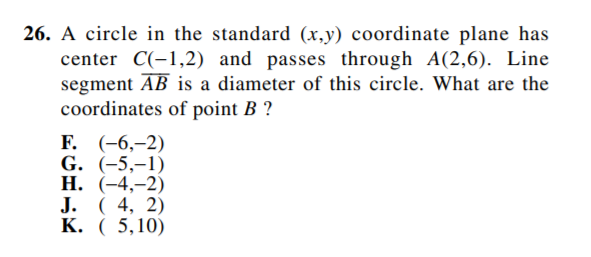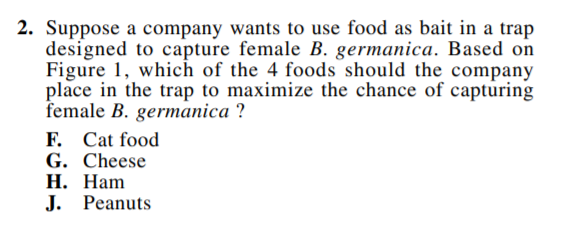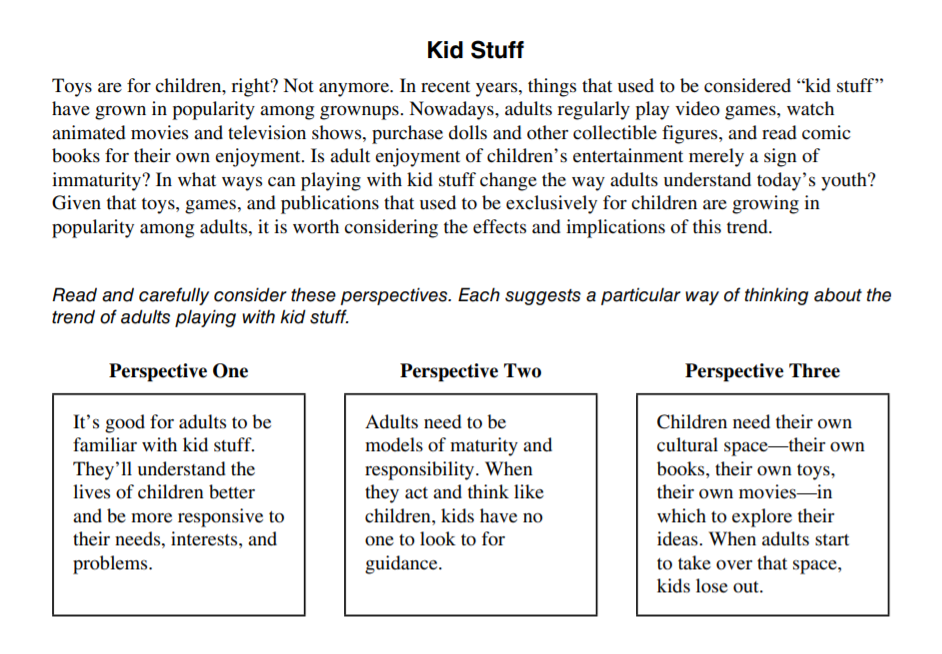Browse By Unit
Jessica Q.
Alejandra Ramos
Jessica Q.
Alejandra Ramos
What is the ACT? How does it work?
The ACT is split into 4 multiple-choice sections (English, math, reading, and science) and an optional essay section. Each multiple-choice section is scored out of 36, and your composite score will be an average of your scores for each of the four sections. Your score will be rounded to the nearest full point if the average ends up going to the decimal places (ie .25, .50, .75). Note that the essay section is scored separately.
ACT Test Overview
Hello! 👋 If you’re here, you’re probably wondering what you’ll need to know for the ACT. Take a deep breath, we’re going to break it down for you!
While the SAT offers more time per question and often poses abstract and complex questions, the ACT is faster-paced ⌚ with more straightforward questions. Evaluate your test-taking style and then decide the best test for you. I would recommend finding past released tests online and taking both under real test conditions. This will help you make an informed decision on which test to take.
If the ACT is your cup of tea ☕, let’s keep going but if not, don't worry! We have plenty of resources for the SAT as well!
Breakdown & Scoring
| Section | # of Questions | Time Allotment |
| English | 75 MC | 45 min |
| Mathematics | 60 MC | 60 min |
| Reading | 40 MC | 35 min |
| Science | 40 MC | 35 min |
| Essay (optional) | 1 essay | 40 min |
ACT English
In the ACT English section you'll encounter 5 passages 📚 with underlines portions. It’s your job to figure out if the underlined portion is correct as it is, or if there’s a better replacement in the answer choices. Other questions may ask you to reorganize paragraphs of the passage or ask about the main idea. Here's a tip💡 –– the general questions about the passage usually is from the end of the passage.
You'll need to apply your grammar and punctuation knowledge to your editing and organization skills. So, focus on studying your grammar rules to excel in this section! Since the English section largely revolves around basic grammar rules, it is the easiest section to bring up your score in so long as you study and practice.
English Example Question
The passage will be on the left side and questions on the right, and underlined portions will correspond to the question numbers.

Image Courtesy of ACT.org
More English Section Resources
Want some more practice with ACT English questions and some awesome tips on how to approach them? Check out these Fiveable resources that have been created by students that have taken the ACT successfully and scored high!
We suggest you start with this one: Fiveable's ACT English Section Overview: What's On It?. This will really help you understand the English section and to comprehend the different parts of it.
ACT Mathematics
Good news–– you’re allowed to use a calculator on the ACT Math section! 🙌 Given the limited time in this section, this will help you save time and check your work.
Although the Math section spans a range of topics 📈, most of it should’ve been taught in school, including pre-algebra, algebra, trigonometry, and geometry.
Simple and easy questions may trip you up, so make sure you brush up on previous math topics by going through practice problems!
Math Example Question

Image Courtesy of ACT.org
Want to check out math resources and tips? You can find all of them here! A great resource to check out first is Fiveable's ACT Math Section Overview: What's On It?:
ACT Reading
Okay, you’ve just finished your mid-test break. What’s next? Let’s hop 🐇 into the ACT Reading section!
You’ll be reading 4 passages📚, each paired with 10 multiple choice questions. Some questions will ask you about specific details explained in the passage, while others will ask you about the main idea or infer based on the given information.
You’ll have access to the passages the entire time you’re answering questions, so make sure to refer back to them as often as you need to. And remember, unless they’re asking you to infer, all the information you need will be in the passage!
Reading Example Question

Image Courtesy of ACT.org
More Reading Section Resources
Here are two resources providing tips on how to get the highest grade you can, and how to master craft and structure. You should start with this resource–– Fiveable's ACT Reading Section Overview: What's On It?:
Science
Congrats! You’ve made it through three sections. Now let's dive right into the ACT Science section.
At first glance, the Science section may look daunting, with diagrams 📊 and terms that you may be unfamiliar with. But don’t worry! Just like with reading, most of the information you need to answer the questions will be in the passage. There will be around 3-4 questions that’ll require simple science knowledge.
You’ll be given 7 passages that’ll include both text and graphs/diagrams. The passages can be sorted into 3 categories: reading graphs/diagrams, interpreting a scientific experiment, and comprehending different viewpoints on a topic.
Example Question

Image Courtesy of ACT.org
For a great break down of the Science section, reference this: Fiveable's ACT Science Section Overview: What's On It .
If you want to practice with Evaluation of Models & Experimental Results section, check out this resource!
ACT Essay

Image Courtesy of ACT.org
We’re at the home stretch! It’s time to cover the optional ACT essay section of the test.
You'll receive a prompt about a societal issue, accompanied by a short background description. The prompt will also include 3 perspectives and you can choose to fully agree with a given perspective, partially agree, or even form your own opinion.
Make sure you manage your time ⏰ to write a well-developed essay in 40 minutes!
Example Question

Image from ACT, Inc.
Resources for the ACT Essay
Curious how you can get full points in this essay section? Familiarize yourself with the rubric to know what they want and how to get points in all the sections!
One of the best resources: Fiveable's ACT Writing Section Overview: What's On It?
Closing
If you’ve made it this far, give yourself a pat on the back👏. You should have a better sense of the breakdown of the different ACT sections, as well as a better idea on what content will be covered .
Many students find the ACT's pacing ⏳ challenging because it's very fast-paced! Be sure to take practice tests in realistic conditions to help you with pacing.
Check out Fiveable's ACT guides and the best ACT prep resources for your next step on your ACT journey! You got this!
<< Hide Menu
Jessica Q.
Alejandra Ramos
Jessica Q.
Alejandra Ramos
What is the ACT? How does it work?
The ACT is split into 4 multiple-choice sections (English, math, reading, and science) and an optional essay section. Each multiple-choice section is scored out of 36, and your composite score will be an average of your scores for each of the four sections. Your score will be rounded to the nearest full point if the average ends up going to the decimal places (ie .25, .50, .75). Note that the essay section is scored separately.
ACT Test Overview
Hello! 👋 If you’re here, you’re probably wondering what you’ll need to know for the ACT. Take a deep breath, we’re going to break it down for you!
While the SAT offers more time per question and often poses abstract and complex questions, the ACT is faster-paced ⌚ with more straightforward questions. Evaluate your test-taking style and then decide the best test for you. I would recommend finding past released tests online and taking both under real test conditions. This will help you make an informed decision on which test to take.
If the ACT is your cup of tea ☕, let’s keep going but if not, don't worry! We have plenty of resources for the SAT as well!
Breakdown & Scoring
| Section | # of Questions | Time Allotment |
| English | 75 MC | 45 min |
| Mathematics | 60 MC | 60 min |
| Reading | 40 MC | 35 min |
| Science | 40 MC | 35 min |
| Essay (optional) | 1 essay | 40 min |
ACT English
In the ACT English section you'll encounter 5 passages 📚 with underlines portions. It’s your job to figure out if the underlined portion is correct as it is, or if there’s a better replacement in the answer choices. Other questions may ask you to reorganize paragraphs of the passage or ask about the main idea. Here's a tip💡 –– the general questions about the passage usually is from the end of the passage.
You'll need to apply your grammar and punctuation knowledge to your editing and organization skills. So, focus on studying your grammar rules to excel in this section! Since the English section largely revolves around basic grammar rules, it is the easiest section to bring up your score in so long as you study and practice.
English Example Question
The passage will be on the left side and questions on the right, and underlined portions will correspond to the question numbers.

Image Courtesy of ACT.org
More English Section Resources
Want some more practice with ACT English questions and some awesome tips on how to approach them? Check out these Fiveable resources that have been created by students that have taken the ACT successfully and scored high!
We suggest you start with this one: Fiveable's ACT English Section Overview: What's On It?. This will really help you understand the English section and to comprehend the different parts of it.
ACT Mathematics
Good news–– you’re allowed to use a calculator on the ACT Math section! 🙌 Given the limited time in this section, this will help you save time and check your work.
Although the Math section spans a range of topics 📈, most of it should’ve been taught in school, including pre-algebra, algebra, trigonometry, and geometry.
Simple and easy questions may trip you up, so make sure you brush up on previous math topics by going through practice problems!
Math Example Question

Image Courtesy of ACT.org
Want to check out math resources and tips? You can find all of them here! A great resource to check out first is Fiveable's ACT Math Section Overview: What's On It?:
ACT Reading
Okay, you’ve just finished your mid-test break. What’s next? Let’s hop 🐇 into the ACT Reading section!
You’ll be reading 4 passages📚, each paired with 10 multiple choice questions. Some questions will ask you about specific details explained in the passage, while others will ask you about the main idea or infer based on the given information.
You’ll have access to the passages the entire time you’re answering questions, so make sure to refer back to them as often as you need to. And remember, unless they’re asking you to infer, all the information you need will be in the passage!
Reading Example Question

Image Courtesy of ACT.org
More Reading Section Resources
Here are two resources providing tips on how to get the highest grade you can, and how to master craft and structure. You should start with this resource–– Fiveable's ACT Reading Section Overview: What's On It?:
Science
Congrats! You’ve made it through three sections. Now let's dive right into the ACT Science section.
At first glance, the Science section may look daunting, with diagrams 📊 and terms that you may be unfamiliar with. But don’t worry! Just like with reading, most of the information you need to answer the questions will be in the passage. There will be around 3-4 questions that’ll require simple science knowledge.
You’ll be given 7 passages that’ll include both text and graphs/diagrams. The passages can be sorted into 3 categories: reading graphs/diagrams, interpreting a scientific experiment, and comprehending different viewpoints on a topic.
Example Question

Image Courtesy of ACT.org
For a great break down of the Science section, reference this: Fiveable's ACT Science Section Overview: What's On It .
If you want to practice with Evaluation of Models & Experimental Results section, check out this resource!
ACT Essay

Image Courtesy of ACT.org
We’re at the home stretch! It’s time to cover the optional ACT essay section of the test.
You'll receive a prompt about a societal issue, accompanied by a short background description. The prompt will also include 3 perspectives and you can choose to fully agree with a given perspective, partially agree, or even form your own opinion.
Make sure you manage your time ⏰ to write a well-developed essay in 40 minutes!
Example Question

Image from ACT, Inc.
Resources for the ACT Essay
Curious how you can get full points in this essay section? Familiarize yourself with the rubric to know what they want and how to get points in all the sections!
One of the best resources: Fiveable's ACT Writing Section Overview: What's On It?
Closing
If you’ve made it this far, give yourself a pat on the back👏. You should have a better sense of the breakdown of the different ACT sections, as well as a better idea on what content will be covered .
Many students find the ACT's pacing ⏳ challenging because it's very fast-paced! Be sure to take practice tests in realistic conditions to help you with pacing.
Check out Fiveable's ACT guides and the best ACT prep resources for your next step on your ACT journey! You got this!

© 2025 Fiveable Inc. All rights reserved.